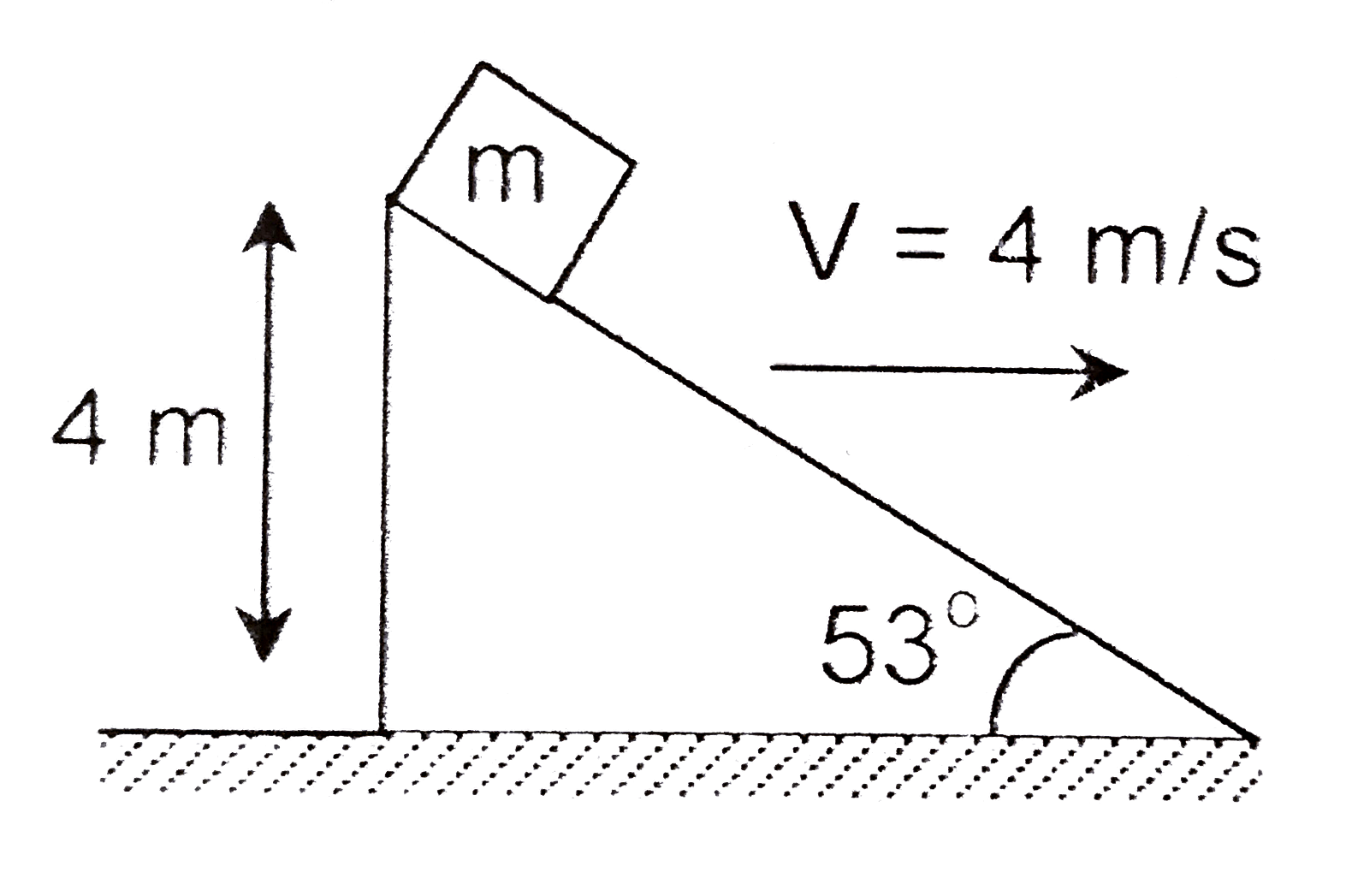A block of ,mass m =11.7 kg is to be pushed a distance of s=4.65 m. Assuming frictionless surface. Calculate the work done in applying a force parallel to the incline to push the block up at a constant speed. (Take, g=9.8 ms−2)

328 J
656 J
164 J
530 J
The correct Answer is:A
(a) Given, m=11.7 kg, s=4.65 m, h=2.86 m
From the figure, sin θ=2.864.65=0.61
Also, component of mg along the incline is mg sinθ.
∴Work done by this force=mgsinθ.s
WF+Wg=ΔKE=0,Wg=−mgh
=11.7×9.8×0.61×4.65
=11.7×9.8×2.86=327.9=328J
Topper's Solved these Questions
- BOOK - DC PANDEY ENGLISHCHAPTER - WORK, ENERGY AND POWEREXERCISE - MATCH THE COLUMNS7videos
WORK, ENERGY AND POWER
- BOOK - DC PANDEY ENGLISHCHAPTER - WORK, ENERGY & POWEREXERCISE - Level 2 Comprehension Based2videos
WORK, ENERGY & POWER
- BOOK - DC PANDEY ENGLISHCHAPTER - WORK, POWER AND ENERGYEXERCISE - E Integer Type Questions11videos
WORK, POWER AND ENERGY
Similar Questions
Find the horizontal velocity of the particle when it reach the point Q. Assume the block to be frictionless. Take g=9.8m/s2.
 View Solution
View SolutionA block of mass m is pulled slowly by a minimum constant force on a rough (μ) horizontal surface through a distance x. Find work done by force F.
View SolutionA block of mass m tied to a string is lowered by a distance d, at a constant acceleration of g/3. The work done by the string is
View SolutionA block of mass m tied to a string is lowered by a distance d, at a constant acceleration of g/3. The work done by the string is
View SolutionA block of mass m tied to a string is lowered by a distance d, at a constant acceleration of g/3. The work done by the string is
View SolutionAn inclined plane is moving with Constant velocity v=4m/s on a horizoontal surface as shown in figure. If a block of mass 2kg is kept at top of the incline and their is no friction between the block and the incline, then the distance travelled by the incline till the block reaches bottom of the inclined is (g=10m/s2)
 View Solution
View SolutionA block of mass 2 kg is placed on the floor . The coefficient of static friction is 0.4 . If a force of 2.8 N is applied on the block parallel to floor , the force of friction between the block and floor is : (Taking g = 10m/s2)
View SolutionA block of mass 2.0 kg is pushed down an inclined plane of inclination 370 with a force of 20N acting parallel to the incline. It is found that the block moves on the incline with an acceleration of 10ms2. If the block started from rest, find the work done a. by the applied force in the first second b. by the weight of the block in the first second and c. by the frictional force acting on the block in the first second. Take g=10ms2.
View SolutionA block of mass 50 kg slides over a horizontal distance of 1m. If the coefficient of friction between their surface is 0.2, then work done against friction is (take g=9.8m/s2) :
View SolutionA block of mass 2.0 kg kept at rest on an inclined plane of inclination 370 is pulledup the plane by applying a constant force of 20 N parallel to the incline. The force acts for one second. A. show that the work done by the applied force does not exceed 40 J. b. find the work work done by the applied force is 40 J. c. Find the kinetic energy of the block at the instant the force ceases to act. Take g=10ms2.
View Solution

